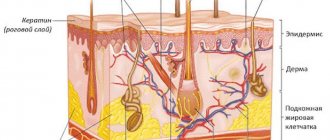Since childhood, we know that there is a normal temperature, and there is a “bad” one. Normal means a temperature of 36.6 degrees. Everything higher and lower indicates that something wrong is happening in the body.
The reasons for the increase in temperature can be quite innocent: for example, in women approximately in the middle of the cycle, when ovulation occurs. The thermometer readings may increase even after intense physical activity - this is normal. But sometimes the reasons are much more serious.
The first thing to do is to listen carefully to yourself and try to understand what else is bothering you besides the fever. The effectiveness of the treatment prescribed by the doctor will depend on how correctly you determine this. With a very high temperature (above 39 degrees), the condition can be very serious, and the best thing to do is to immediately call an ambulance. Intense fever can be accompanied by convulsions, short-term loss of consciousness, even delirium - in short, this is not a condition when it is enough to just lie down at home.
Signs of a high fever
The following signs (symptoms) may indicate that the temperature is rising:
- a feeling of weakness, sudden fatigue, a general painful state;
- chills (mild chills at slightly elevated temperatures and severe chills at high temperatures);
- dry skin and lips;
- headache, body aches;
- loss of appetite;
- sweating (“breaks into a sweat”);
- arrhythmia.
If you are experiencing any of these symptoms, it would be a good idea to take a thermometer.
What is considered a high temperature?
Normal temperature is generally considered to be 36.6°C. But in fact, temperatures within a fairly wide range are normal.
During the day, body temperature fluctuates quite a bit. The lowest temperature is observed in the morning, immediately after waking up; maximum - in the evening, at the end of the day. The difference can be somewhere around 0.5°C. Physical activity, stress, ordinary meals, drinking alcohol, staying in a bathhouse or on the beach can raise the temperature. In women, temperature fluctuations are also associated with ovulation. A few days before ovulation, the temperature decreases, and when ovulation occurs, it increases.
On average, a normal temperature is considered to be between 35° and 37°C. In children under 3 years of age, a temperature of up to 37.5°C is also considered normal. Where you take your temperature matters. You can focus on 36.6°C if you place a thermometer under your arm. If the thermometer is held in the mouth ( oral temperature
), then the normal temperature will be 0.5°C higher (36.8-37.3°C).
In order to obtain normal values when measuring the temperature in the rectum ( rectal temperature
), you will need to add another half a degree (the norm is 37.3-37.7 ° C). Based on the measurement of the temperature under the arm, an elevated temperature is a temperature in the range of 37-38°C, a high temperature is above 38°C.
Worrying is either a temperature that rises above 38°C or a temperature of up to 38°C that persists for a long time ( low-grade fever
).
When is an increase in temperature dangerous?
High body temperature is an undoubted sign that some pathological process, usually of an inflammatory nature, is developing in the body. The higher the temperature, the faster it rises or the longer it lasts, the more serious the problem that caused it may be. This is why high temperatures are scary.
Meanwhile, in itself, an increase in temperature in most cases is a protective reaction to the penetration of infection. At high temperatures, the activity of pathogenic microorganisms decreases, and the body’s defenses, on the contrary, intensify: metabolism and blood circulation accelerate, and antibodies are released faster. But this increases the load on many organs and systems: cardiovascular, respiratory. High temperature depresses the nervous system and leads to dehydration. Possible circulatory disorders in internal organs (due to increased viscosity and blood clotting). Therefore, a high temperature that lasts for a long time can pose a danger in itself. Extremely high temperatures (above 41°C) are also dangerous.
Reduced body temperature
Like high temperatures, low temperatures also indicate problems. Especially if it lasts for a long time. This leads to rapid fatigue, loss of mood, weakness of the body, etc.
Causes of low body temperature
A decrease in temperature is observed:
- with low hemoglobin;
- in case of internal bleeding;
- during pregnancy;
- if there are problems with blood vessels;
- for diabetes;
- with pathology of the adrenal glands;
- during brain tumors;
- with asthenic syndrome;
- during skin lesions;
- as a result of seasonal ARVI;
- in case of intoxication;
- as a consequence of hypothermia;
- with hypothermia.
Symptoms of low body temperature
Symptoms include:
- weakness;
- drowsiness;
- apathy;
- chills;
- feeling of cold.
Should I lower the temperature or not?
There is no need to rush to lower the temperature. First of all, the patient must be examined by a doctor. You should follow the doctor’s recommendations: if he advises you to lower your temperature, then you should lower it. The doctor makes decisions based on the general picture of the disease and assessment of the patient’s condition, that is, recommendations are always individual.
However, if the patient has a severe fever and the temperature is high (39°C or higher), then he can be given an antipyretic drug, strictly following the instructions on the package. At the same time, you need to understand that you are fighting a symptom, not a disease.
The correct course of treatment involves identifying the cause of the high temperature and carrying out a set of measures aimed at treating the disease that caused its increase.
What to do if the temperature does not go away?
Contact the clinic. If you cannot determine which specialist you need, you should start with a therapist - he will assess your general condition and recommend that you take tests that will give a more objective picture (usually a general blood and urine test).
Our clinic provides a full range of medical services in all areas - our allergists, surgeons, gynecologists, urologists, gastroenterologists, and dozens of doctors of other specialties will provide you with qualified assistance. Here, in the clinic, you can undergo all the necessary tests. A serious plus is that all examinations and treatment measures will be carried out at a time convenient for you.
If you have previously been diagnosed with diseases that have become chronic, be sure to inform the doctor about them during your appointment - this will make it easier for him to navigate the list of examinations that you need to undergo.
Causes of high temperature
Any inflammatory process can cause an increase in temperature. The nature of inflammation can be different - bacterial, viral, fungal. In most cases, the temperature is a concomitant symptom: for example, with otitis media, the ear hurts (“twitches”) and the temperature is elevated...
Temperature attracts special attention when no other symptoms are observed. Temperature against the background of standard signs of ARVI is ordinary, but only one high temperature is frightening.
Diseases that may cause a high fever without other symptoms
:
- ARVI and influenza. Flu, and in some cases other acute respiratory viral infections, can begin with a sudden rise in temperature. In this case, catarrhal symptoms begin somewhat later (in the late afternoon or the next day);
- angina. Along with fever, there is usually a sore throat when swallowing. The pain in the throat intensifies quite quickly, so that it cannot be ignored;
- chickenpox (chickenpox). The typical onset of chickenpox is high fever. Characteristic rashes may appear only on the 2-3rd day of illness;
- abscess (accumulation of pus in superficial tissues or internal organs). With an abscess, the temperature “floats”: temperature peaks can be interspersed with normal temperature during the day (in contrast to the typical temperature schedule for an “ordinary” infectious disease - when the lowest temperature is observed after waking up in the morning, and rises in the evening);
- inflammations of the genitourinary system (pyelonephritis, glomerulonephritis) are usually manifested by high fever and pain in the projection of the kidneys. But in some cases there may be no pain;
- appendicitis - can also occur without pain;
- meningitis and encephalitis (inflammation of the meninges of infectious origin). In this case, high temperature is accompanied by severe headache, nausea, and blurred vision. A characteristic symptom is tension in the neck muscles (the chin cannot be lowered to the chest);
- hemorrhagic fever (usually infection occurs through the bite of wild animals, for example, a field mouse). This also has its own characteristic symptoms - a decrease (even cessation) of urination, the appearance of subcutaneous hemorrhages (spotted redness of the skin, rash), muscle pain.
Elevated temperature (up to 37.5-38°C) without pronounced other symptoms
may be observed with:
- tuberculosis;
- oncological diseases;
- diseases of the thyroid gland (thyrotoxicosis);
- neurological disorders;
- allergic reaction (this is how individual intolerance to medications may manifest itself).
The following diseases also occur with an increase in temperature:
- inflammation of the lungs (pneumonia). Pneumonia is a common cause of high fever. In this case, chest pain, shortness of breath, and cough are usually observed;
- infectious diseases of the gastrointestinal tract (gastroenterocolitis). Here temperature is a side symptom. Main complaints: abdominal pain, diarrhea, nausea, vomiting;
- viral hepatitis A, which is characterized by the appearance of a jaundiced coloration of the skin and whites of the eyes;
- other viral diseases - measles, rubella, mumps (mumps), mononucleosis, polio, etc.;
- chronic diseases of the urinary system (chronic pyelonephritis, cystitis), in women - chronic salpingoopharitis. Along with low-grade fever, abdominal pain and urination problems may occur;
- sexually transmitted diseases (gonorrhea, syphilis, urogenital infections - toxoplasmosis, trichomoniasis, ureaplasmosis, etc.);
- chronic myocarditis and endocarditis. In this case, the usual symptom is pain in the heart area;
- autoimmune diseases (rheumatism, systemic lupus erythematosus, etc.).
This, of course, is not a complete list of diseases that can cause fever
High temperature in a child
The child will not say that he has a high temperature. Even relatively older children, including students in elementary school, as a rule, cannot correctly assess their well-being. Therefore, parents need to closely monitor the child’s condition. You can suspect an increase in temperature based on the following signs:
- the child becomes unexpectedly lethargic or, conversely, restless and capricious;
- he is tormented by thirst (he asks for a drink all the time);
- mucous membranes become dry (dry lips, tongue);
- bright blush or, conversely, unusual pallor;
- eyes become red or shiny;
- the child is sweating;
- pulse and breathing increase. The normal heart rate is 100-130 beats per minute while sleeping and 140-160 while awake. By two years, the frequency decreases to 100-140 beats per minute. The normal breathing rate also depends on age; for a two-month-old child it is 35-48 breaths per minute, for an age from one to three 28-35 breaths.
You can measure body temperature in the armpit or groin cavity with a mercury thermometer (it most accurately shows the temperature), rectally - only with an electronic one. It is possible to measure the temperature rectally only in a small child (up to 4-5 months); older children resist the procedure, as it is unpleasant. To measure the temperature rectally, the tip of the thermometer is lubricated with baby cream, the child’s legs rise, as if washing. The tip of the thermometer is inserted into the rectum to a depth of 2 cm.
We should not forget that in children under one year of age, a normal temperature is considered to be a temperature of up to 37.5°C, and even up to 3 years of age, such a temperature does not always mean that the child is sick. You cannot measure the temperature when the child is very worried, crying, or is tightly wrapped up - the temperature in these cases will be expected to be higher. A hot bath or too high a room temperature can also increase your body temperature.
In young children, the temperature can rise up to 38.3°C for reasons unrelated to illness, such as:
- overheating (due to excessive wrapping, exposure to direct sunlight or poor drinking habits), especially before the age of 3 months;
- scream;
- constipation (if the child pushes, the temperature may rise);
- teething (one of the most common causes).
If it does not seem that the temperature is caused by one of these reasons, it persists and does not subside, or, moreover, increases, it is necessary to urgently consult a doctor. If the temperature is above 38°C, you should consult a doctor in any case.
Thermoregulation in the body
For normal human life it is necessary that heat exchange be carried out constantly. It depends on the characteristics of the organism and on the presence of various reflex stimuli, and changes can have an effect even if the ambient temperature remains unchanged.
Violation of thermoregulation
First of all, such violations can occur as a result of exposure to external or internal factors. For example, internal diseases include various types of diseases.
The main symptoms can be considered:
- chills;
- chills, as a result of hyperkinesis - when involuntary muscle contractions occur;
- as a result of hypothermia - the consequences of hypothermia;
- as a consequence of hyperthermia - in case of overheating of the body.
The main causes of thermoregulation disorders are:
- congenital or acquired defect of the hypothalamus. It can negatively affect the functioning of many internal organs, including body temperature itself;
- climate change. This external factor is capable of influencing body temperature as a result of adaptation of the body;
- alcohol abuse;
- a consequence of processes associated with aging;
- various mental disorders.











